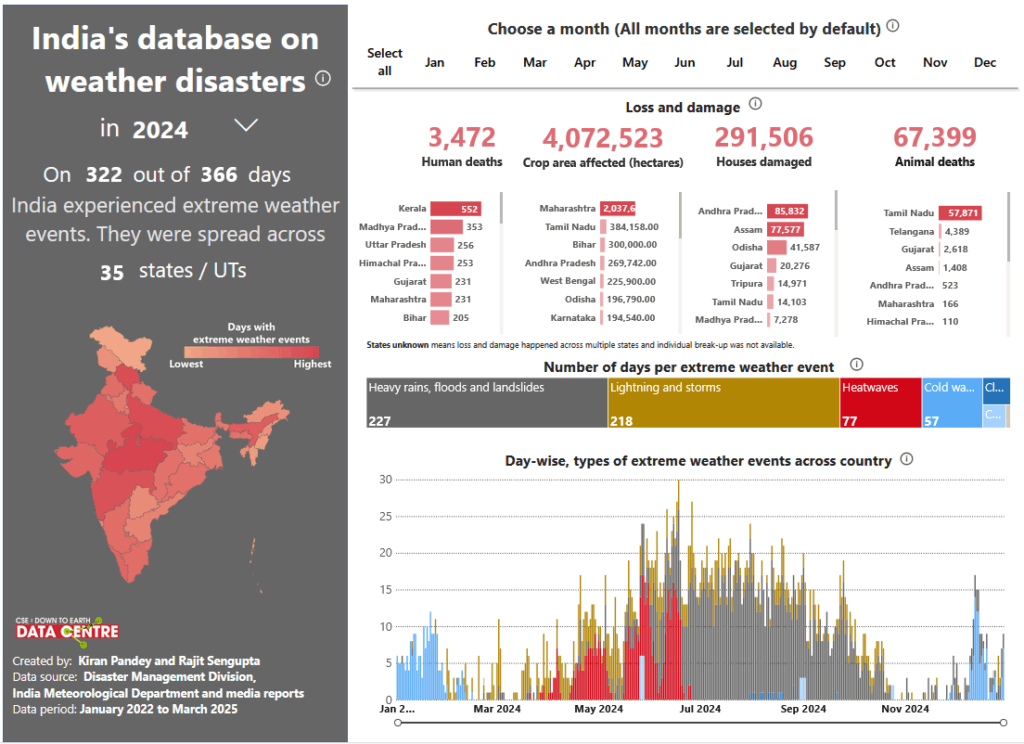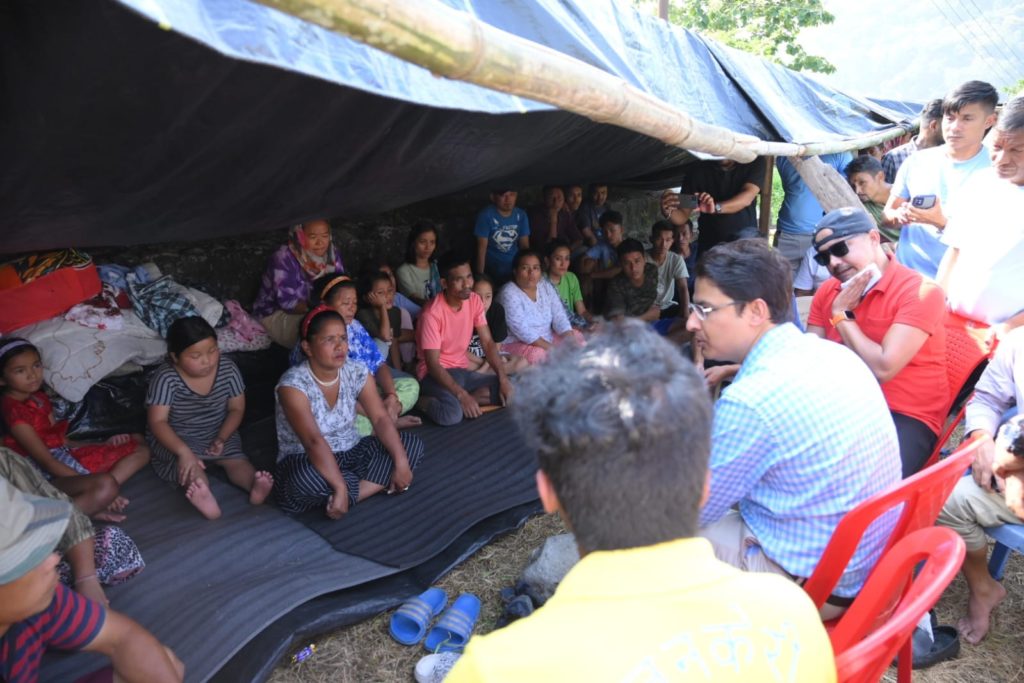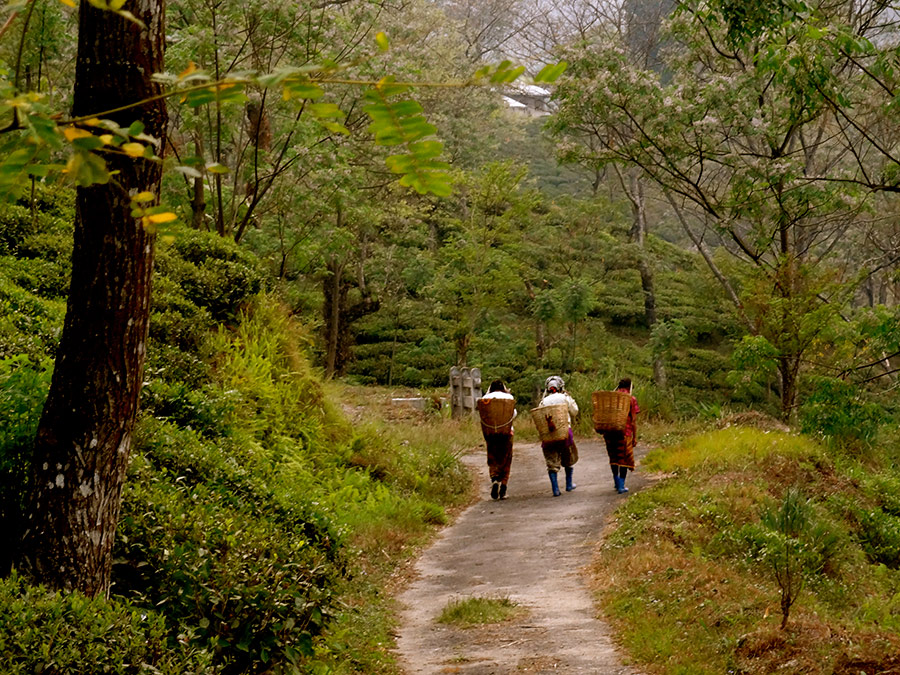Integrated Mountain Initiative offers deepest condolences to people and families who have lost their lives and have been impacted with the recent spate of disasters across the Himalaya. These disasters impact the socio-ecology of the Himalaya and with the increasing magnitude and frequency of the disasters; Integrated Mountain Initiative (IMI), a civil society platform of peoples and organisations across the Indian Himalayan Region, calls on urgent and focussed intervention that are appropriate to the importance and fragility of the Himalaya.
The urgency and criticality for action is highlighted by the Centre of Science 2025 analysis of India’s Atlas on Weather Disasters which shows that the Himalayas have faced extreme weather for 822 days since 2022 killing 2,683 people across 13 states and UTs.

The 2025 monsoon has been extremely harsh on the people and ecology of the Himalaya with a spate of big disasters. An analysis of news for 2025 shows that more than 400 lives were lost, over 35,400 houses damaged, more than 1000 roads and multiple bridges damaged as well as, loss of schools, energy facilities, army installations across eight states in the Indian Himalayan Region with an estimated loss around Rs.₹3,000–3,500 crore. This has impacted not just the wellbeing of people and ecology of the Himalaya but the millions who are dependent on the ecosystem services provided to the Ganges and Brahmaputra riverbasins downstream
| Region/State | Major 2025 incidents & dates | Known impacts (indicative) |
| Himachal Pradesh | Multiple cloudbursts/landslides/flash floods June–Aug; major road blockages (e.g., Chandigarh–Manali) | 261–263 deaths; ₹2,170–2,200+ crore losses; 350+ roads blocked at points; schools closed, power/water disrupted. Hindustan Times The Times of India |
| Uttarakhand | Aug 5 Dharali/Uttarkashi cloudburst/flash flood | Deaths & dozens missing; houses, bridges, roads damaged; official response underway. ReliefWeb |
| Sikkim | Early June landslides/floods; Chhaten landslide at Army camp | >1,000 tourists stranded; 3 personnel dead, 6 missing. Reutersmint |
| Assam | Early June statewide floods | 6.3 lakh affected, 12 deaths; large crop damage; SDRF/NDRF & IAF ops. News on Air |
| Manipur | May-June statewide floods | Over 165,000 people have been affected, mostly in the state’s Imphal valley. An estimated 35,242 houses across the state had been damaged |
| Arunachal Pradesh | Floods/landslides (Jun) | 61,000+ people affected; major road damage; flash floods in Itanagar. At least 44 people were reportedly killed. Changlang district was hit worst, leaving more than 2,000 people homeless. Mongabay |
| Mizoram | landslides & heavy rain (late May–early Jun): | 5 deaths; 552–598 landslides; 152 houses collapsed/damaged; hundreds displaced. Mudslides led to the blockage of 212 roads. More than 300 families of a total of 452 have been displaced and evacuated by government agencies. Many roads crisscrossing the hill state were blocked due to landslides. |
| Jammu & Kashmir | Aug 14–15 cloudburst/flash floods (Kishtwar/Chasoti; pilgrims affected) | 60+ deaths, >100 missing region-wide; ~62 deaths in Kishtwar alone; bridges & tracks damaged. ReutersThe Times of India |
We in the Himalaya, are extremely aware that we have been facing the brunt of these disasters that are the result of global forces like climate crisis as well as development pathways chosen for and by the Himalaya. There is a need for deep introspection and creating development pathways that are mountain centric and sensitive with a long term vision that is not extractive and destructive. In the face of the climate crisis, which is predicted to worsen, there is a commitment needed at the National and International level that supports development paradigms for the Himalaya that promote resilience and wellbeing.

2025 has delivered a grave and bitter truth that Himalayan disasters are now the “business as usual” as year after year, the frequency and intensity of climate related disasters across the region have devastated lives and livelihood. Although for the Indian Himalayan Region, climate change may be driven more from outside (as IHR has a low population and lesser carbon footprint as compared to the rest of India), it is likely that human-induced climate change along with non-climatic factors has contributed to the observed intensification of heavy precipitation often reported as “Cloud Burst Phenomena”. The impacts on the ground have been severely magnified by improper planning and the overall development trajectory.
These disasters, even though reported as one off events, are interconnected and exist in a larger framework that impacts our Himalaya. They call on us as well as the larger nation state to rise up for the Himalaya and address it with appropriate action that includes immediate relief and rehabilitation but most importantly address the root causes of these disasters with a long term mountain vision. The need for the recognition of the IHR as a multi hazard landscape with a complex interplay of events across timelines and ecosystems which required to be looked at from an interdisciplinary manner and beyond single disaster events is crucial. This requires policy, practice and appropriate resource allocation.
Integrated Mountain Initiative calls on the need to have action at multiple levels that requires national as well as local commitment so that the wellbeing of the Himalaya and downstream is ensured.
Short-Term
Early Warning and Forecasting
- Use remote sensing data/artificial intelligence to designate hotspots for infrastructure development.
- Improve and apply satellite-based real-time monitoring and advanced weather forecasting for floods, landslides, cloudbursts and GLOF especially in designated hotspots.
- Ensure that district-level forecasts information are shared timely and to the last mile.
Emergency Preparedness
- Awareness building and Capacity enhancement in disaster prevention and response.
- Establish community-level disaster shelters in safe areas.
- No earthwork in larger infrastructure projects during the monsoon period
- Revise and mandate region-specific building/road-building codes to ensure disaster resilience.
Long-Term
Adopting River basins and Mountain landscapes approach
- Establish sustainable land-use/river-basin planning with clearly designated sensitive eco-zones and hotspots.,
- Identify sensitive wetlands/springs, river banks, and any other traditional water systems for natural flood and drought mitigation.
- Promotion of natural regeneration of forest areas and afforestation with native site-specific species, and allocate funds for eco-sensitive zone (ESZ) Any hydropower or dam investments must be as per the level of eco-sensitiveness.
- Involve local communities and key stakeholders for site specific land-use planning at design stage and fix responsibilities for management.
- Strengthen multi-agency coordination for effective risk assessment and disaster response.
Climate-Resilient Infrastructure
- Invest in last mile green roads, bridges, flood defenses, and slope stabilization structures built to withstand extreme weather events.
- Update and enforce building codes to integrate local geology and hydrology for disaster resilience.
- Run of the River small hydropower should be preferred in mountain especially in Himalaya because of earthquake vulnerabilities and floods
- Strengthen glacial lake monitoring and early warning systems to prevent glacier lake outburst floods (GLOFs).
Community Capacity Building
- Strengthen community-led conservation models, participatory hazard mapping, and disaster preparedness education programs and incentivize good practices.
- Expand community-based flood early warning systems (CBFEWS), leveraging digital and satellite technologies for rapid alerts.
- Equip locals with green technologies and support sustainable livelihoods like agroforestry and ecotourism.
Policy, Research & Collaboration
- Update disaster management plans and hazard vulnerability databases, incorporating historical and local data
- Promote inter-state and transboundary cooperation and real-time data sharing among Himalayan nations for disaster management and climate adaptation.
Integrate Resilience Building and Climate Adaptation in Development
- Mainstream disaster risk reduction and climate adaptation into all development projects, urban planning, and critical infrastructure.
- Limit hillside cutting, concretization, and wetland reclamation through revised planning laws.
- Allocate dedicated resilience building and climate adaptation funds and incentivize risk reduction practices.






Leave a comment